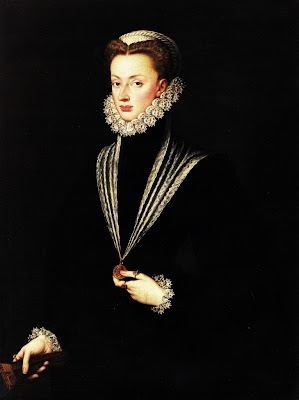House Museum of the Mouse Perez / Casa Museo de Ratón Pérez
12/10/11 – Calle Arenal, 8
The U.S. has a tooth fairy, but children in Spain and many parts of Latin America expect an elegant rodent named Mousie Pérez to collect teeth from under their pillows and leave behind a gift. The legend of Mousie Pérez—el ratoncito Pérez—was created in 1894 by a Jesuit named Luis Coloma. Coloma wrote the story as a gift and moral guide for Spain’s 8-year-old King Alfonso XIII, or “King Buby,” as his mother called him. In the story, the mouse takes the young King along on a nocturnal visit to the poorest neighborhoods of Madrid, so that Buby can witness the lives of less fortunate children. It's more of an adventure than a treacly tale, and the character of ratoncito Pérez has plenty of appeal.
 |
| Cover of first edition, 1911 |
Mousie Perez lives with Señora Pérez and children (Adolfo, Elvira, and Adelaida) in a Huntley’s biscuit box in the basement of the Carlos Prast confectionery, at number 8 Calle Arenal. The building still stands today, on a busy pedestrian street just steps from Puerta del Sol and the Royal Palace.
 |
| Former Prast confectionery |
In 2003, the city of Madrid paid homage to the mouse by placing a plaque and a tiny bronze sculpture just inside the doorway.
Upstairs, a rather gaudy, one-room museum trades on the Mousie Pérez legend. It sells trinkets, including a facsimile of Coloma’s book (8 euros). For 1 euro, children and their parents enter a second room and gather around a cross-section of the Pérez family’s biscuit-box, to listen to a guide tell stories about the famous mouse.
 |
| Pre-teen in front of House Museum of Mousie Perez |
On this foggy Saturday morning a few weeks before Navidad, the stairwell was thick with families. The museum allows 30 visitors at a time, and the next available tickets were for 7:30 p.m., a full seven hours later. I’d brought along Son 2 for company. He's 12, and still has some baby teeth and an interest, albeit waning, in talking animals--though only when they are engaged in mortal combat. Still, I knew what I had to do in order to see the tooth of Beatrix Potter. I sent my dear boy outside, and brazenly talked my way into the exhibit for a brief look around.
My readers will be surprised to know that the teeth of several luminaries in addition to Ms. Potter are on display: Isaac Newton, Marie Curie, Edith Piaf, Louis Pasteur, Beethoven, Rosalia de Castro, and… Miguel de Cervantes. I smelled a rat. But no, the pleasant guide told me, “Ratón Pérez told us these are their teeth, and we can only take his word for it.” She looked at me as if to say, these walls have ears.
Back outside in the throbbing heart of Madrid, the line to buy lottery tickets for El Gordo, the Big One, stretched across the Puerta del Sol. A motley Sponge Bob, looking a bit unlicensed, tried to interest passersby in a photo with him, for a small fee.
And then we saw a frozen flash mob, row upon row of people standing still, looking mournful, and holding the carcasses of small animals in their outstretched hands.
The group Igualdad Animal, an animal equality organization, was holding a protest. It certainly caught our attention. Son 2 was thoughtful. “I hope that’s not Ratón Pérez,” he said, with a glint in his eye.




















































